When traveling in Japan, you may see statues dressed in red cloth. They are representations of Jizo, the Buddhist divinity loved by most Japanese people! I, too, love them and would like to give you a brief introduction to their role and symbolism.
The Roles of Jizo
The Jizo Bodhisattva, “O-Jizo-san” in the Japanese honorific language, is a deity fondly loved by Japanese people. You will find Jizo statues in many places: in Buddhist temples, graveyards, at the side of the road in the countryside, and, less commonly, at the corner of some streets in the cities.
The primary role of Jizo is to protect children. This explains why, in Studio Ghibli’s animation movie “My Neighbor Totoro,” when little Mei gets lost, she finds refuge next to Jizo statues.
Jizo also protects the souls of children who passed away and unborn babies. In Japanese beliefs, it is thought that the soul of children who died before their parents, consequently making their parents suffer, cannot cross the river to the afterlife. They remain on the side of the river, having to pile stones as an act of penance. Devils come to try to destroy these stone towers, and this is when O-Jizo-san appears to save them and hide them in his clothing from the evil spirits. He then looks after them as a guardian in replacement of their parents.

The other central role of Jizo is to protect travelers, which is why you will often find Jizo statues on the side of the roads like in the picture above. This tradition is derived from the ancient belief of Dosojin. Dosojin is a deity who protects travelers. The deity statue was placed on mountain pathways, crossroads, and at the borders of villages. The sculptures were generally in the shape of a couple. With time, Jizo has taken their role.
Jizo also protects firefighters and saves the souls of those suffering in the afterlife.
Why Are Jizo Statues Dressed in Red Clothing?
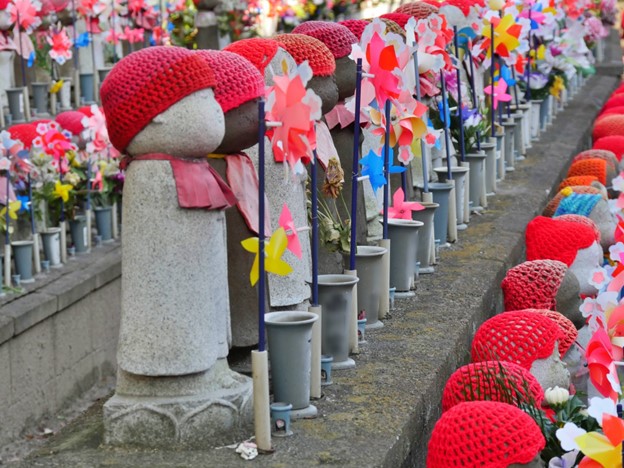
Japanese people believe that red is the color to defend against evil since ancient times. Babies are vulnerable, so their parents dress them in red to protect them from illness and danger. Jizo statues also wear red bibs, because the worshippers offer baby bibs and hoods. Some wish for protection, and others who have lost their baby pray for the spirits to go to heaven without suffering.
Grieving parents also give them toys as an offering. People sometimes also build stone or pebble towers next to them, wishing to help the deceased children in their penance.

Local Traditions
Jizo statues can be subject to local traditions. One example is the Okakae-Jizo that can be found in Takehara City (Hiroshima Prefecture).
This Jizo is believed to fulfill one’s wishes if the Jizo feels lighter than expected while holding it and reciting the Jizo’s mantra, “On-kakaka-bisamaei-sowaka,” three times.
In some temples, it is customary to pour water on the Jizo statue as a gesture of worship.
A Familiar Deity Giving a Strong Mystical Atmosphere
Their peaceful features and the many places you can meet them make Jizo statues one of my favorite sights as a foreigner in Japan! Some figures, very ancient, give a truly mystical atmosphere to the Japanese countryside.
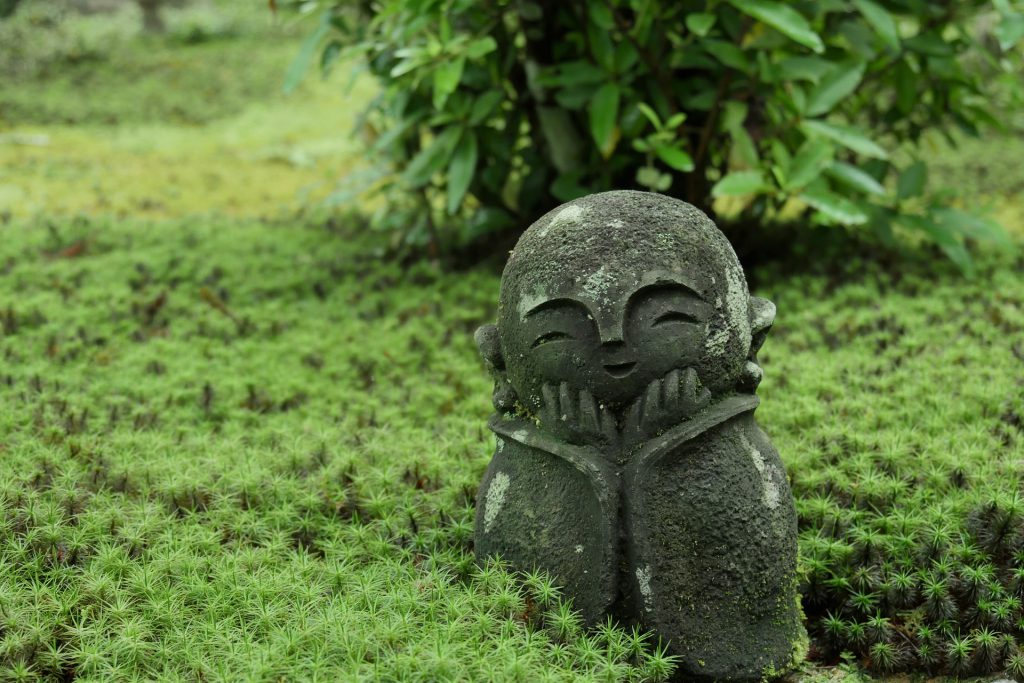
Jizo statues are highly likable, as it is said that Jizo becomes close to everyone, especially those in trouble. Some shops sell adorable versions of them as lucky charms and souvenirs.
I love to find them in the most peculiar places, and they fill me with a calm feeling. What about you?

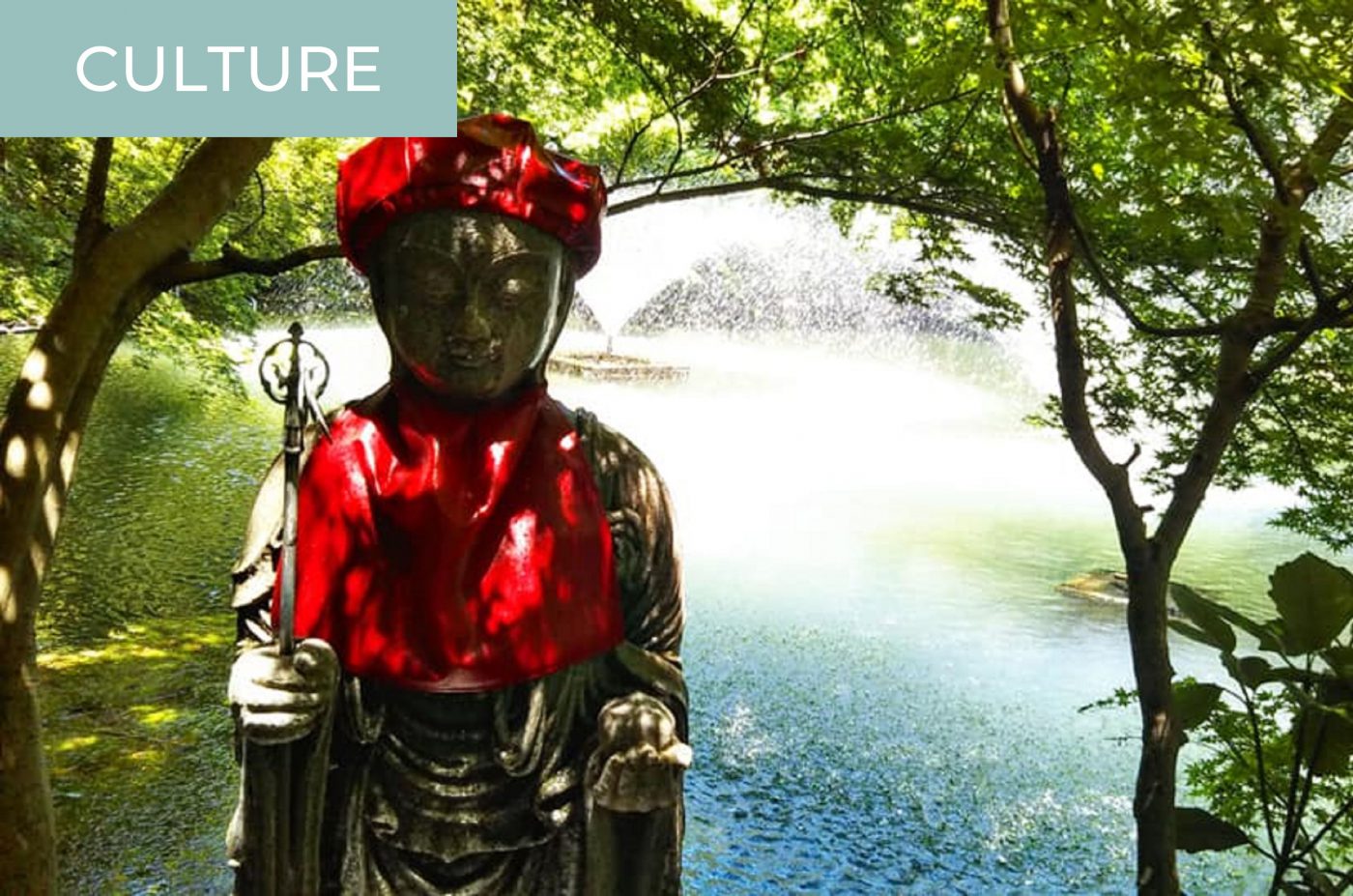
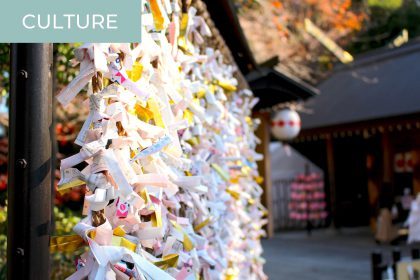
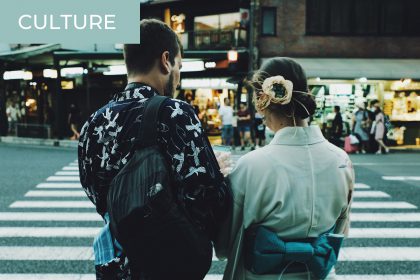
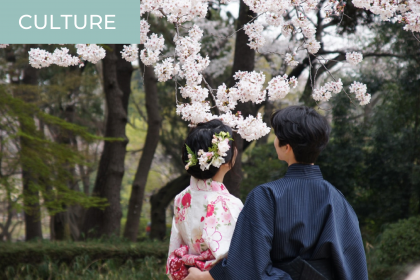
23 Comments
Sue A Duthweiler
September 17, 2020 at 8:15 AMThank you for the posting on Jizo statues. They fascinated me during our visit to Japan more than thirty years ago. I’m happy to know what the sweet children with red hats are all about.
Amélie Geeraert
September 17, 2020 at 9:36 AMDear Sue,
I’m glad you found this article useful. Jizo statues sure are fascinating!
Lee Wikoff
September 26, 2020 at 9:46 AMThanks for your post. I became aware of Jizo and was moved by them during a visit to Hasedera shrine in Kamakura while I was in the Navy in the 1960s.
I hadn’t made the connection about the Jizo in “My Neighbor Totoro (one of my favorite Studio Ghibli movies) so I’ll watch it with new insight in the future.
I have a number of gardens and have recently added a miniature garden with a Jizo and Torii gate modeled after the one at Hasedera shrine.
Amélie Geeraert
September 28, 2020 at 10:23 AMHi Lee!
Hasedera is definitely a place that stays with you! The fact you recreated a miniature version in your garden is so nice.
I’m glad if the article will make you see “My Neighbor Totoro” under a new light – other Jizos are also in the movie – see if you can spot them!
Thanks a lot for sharing your impressions!
David Jenkins
November 29, 2020 at 4:01 PMThank you Ame’lie!
Wife and I just returned from a short jaunt up Ikoma-San to Hozanji. The number of Ojizo up the mountain trail is amazing. Thank you so much for information! Thank you. Thank you. Thank you.
Amélie Geeraert
November 30, 2020 at 10:41 AMYou’re very welcome. I’m glad this article was useful to you!
Inge
March 8, 2021 at 9:47 PMWhat a lovely statue, that Jizo!
Im would love to buy one for our japanese garden. Do you know where i can buy this one?
It has to be shipped to the Netherlands.
Amélie Geeraert
March 9, 2021 at 9:53 AMDear Inge, Thanks for your comment! Since jizo are increasingly getting known to the public, it has become easier to find them on major online shopping websites (local shops selling on Amazon Japan for example – there is a version of the site in English). I believe Etsy also has a fair selection of affordable and cute jizo. I hope you’ll find the perfect one for your garden!
Marc D.
March 23, 2021 at 9:37 AMThanks for the article. Very interesting. I stumbled across a group of Jizo in a forest in Tochigi.
Today I carved a wooden Jozi statue of my own, which led me to reading more about them.
Amélie Geeraert
March 23, 2021 at 10:05 AMDear Marc,
Thanks for your comment. I’m glad you found the article interesting. How lovely to carve one’s own jizo!
Indy
October 17, 2021 at 4:41 AMHello, Thanks for the article! But I got curious about a couple of things, why does the statue appear in child appearance? It’s because they want the soul of the children feel comfortable around them? And the reason that Jizo can be seen at all over the place is because of the influence of Dosojin?
Amélie Geeraert
October 18, 2021 at 6:15 PMDear Indy,
Thanks a lot for these two interesting questions!
Originally, Jizo statues looked much more like adult monks but from the 12th century, they gradually changed to look child-like as most of them do today. It is believed that since Jizo statues protect children, people have given them a more “lovable” appearance to make them look more friendly and familiar.
Regarding the fact they are everywhere is most probably the influence of Dosojin as you suggested. Apparently, Jizo statues that are Buddhist have replaced the Shinto Dosojin statues with time, also Dosojin can still be seen too, especially in ancient places.
Indy
October 28, 2021 at 4:01 PMThank you for your answer! It’s been my mind for so long, it’s clear now 😀
Amélie Geeraert
October 29, 2021 at 10:25 AMYou’re very welcome!
Òscar Serra
February 8, 2022 at 2:41 AMDear Amélie,
Thank you for your post; it’s very gratifying to have found you. We have recently lost a no born child and we would like to remember him with a stone statue of a Jizō in our garden.
We have been looking for artisans, workshops or companies that produce them but we have not find any that are Japanese or that have enough quality…
Could you please give me a web address with which to contact an artisian who produce them?
I will be very grateful to you.
Òscar.
Amélie Geeraert
February 8, 2022 at 9:55 AMDear Òscar,
I am very sorry for your loss.
This artisan located in northeast Japan makes very cute Jizo statues and also ships to other countries:
https://isinko-english.com/about/#sculptures
If that style does not suit you, you may find other types on Amazon Japan, but it may be more difficult to assess quality, etc.
I hope that will help you.
Òscar Serra
March 15, 2022 at 12:15 AMDear Amélie.
Thank you very much for your help. We are very glad.
Nancy
April 24, 2022 at 3:48 PMThank you for the intersting article. I’ve known about Jizo statues and in fact own one but I didn’t know about the water pouring and the red bib and bonnet.
I’m going to buy some red yarn tomorrow and get my mom to crochet a bib and a bonnet for it; I’ll also learn to hydrate the Jizo more too. Thank you the tips!
Amélie Geeraert
April 25, 2022 at 10:53 AMDear Nancy,
I am glad you found our article useful! I find it adorable that your mom will crochet the bib and bonnet herself. They are indeed often hand-made by people taking care of the temple or from the community, and it is a gesture of devotion. I would love to see what it looks like, so do not hesitate to share a picture here later!
J Hart
November 2, 2022 at 2:06 AMThis poem appearing on 3quarksdaily.com today, 11/1/22, is what sent me to your site. Thank you.
Knitting a Hat for my Small Jizo Statue
Because the hat I knitted for my dead boy taunted me
on the pile of abandoned baby clothes.
Because my fingers ached to hold something, anything.
Because the winter days, though short of sun, were as long as years—
each day a bear holding the hours in its mouth like a limp carcass.
Because I could stare in the mirror and not recognize myself as living.
Because I wanted to be living.
Because I watched the planes cross over Cincinnati every night from my window,
and it didn’t bring him back.
Because I needed somewhere else to go while staying right here.
Because the Japanese do much better with grief and someone gifted me a Jizo statue.
Because death doesn’t care if you’re a republican or democrat, a knitter or MMA fighter.
Because when you feel hurled out of orbit, there’s always a trail of yarn to follow back.
by Rae Hoffman Jager
from Contrary Journal
published Summer 2022
Amélie Geeraert
November 2, 2022 at 11:17 AMDear J,
Thank you for sharing with us this very beautiful and powerful poem.
My thoughts go to the author.
rg
May 11, 2023 at 1:28 AMThis is exactly the information that I needed. Just returned from Japan and visited the Gotokuji temple with the six Jizo statuary and the Jizo-do. Problem is, there was no good explanation of what a Jizo represented. Question: After the parents die, can they then find their children and take them across the river?
Amélie Geeraert
May 15, 2023 at 3:57 PMHi rg,
Thanks a lot for your comment. I’m glad the article was useful in understanding your visit at Gotokuji!
Thanks also for your interesting question. Unfortunately, I was not able to find the answer. Maybe a Japanese Buddhist monk would be able to answer…